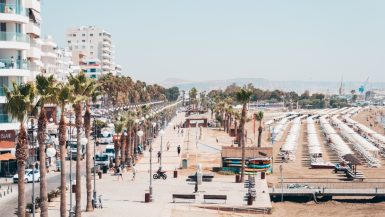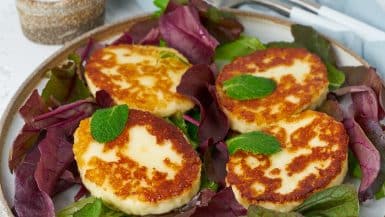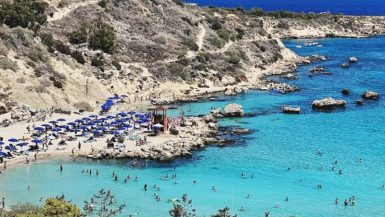
The mythical land of Cyprus, also known as a birthplace and playground of the gods, is a promised land where supposed sightings of Aphrodite, the Greek goddess of love, are still reported. The island is as magical as legend has it, with a rich history and unique location, but is Cyprus worth visiting? We’re here to find out.
Cyprus’s sunny climate, beautiful sandy beaches, crystal clear seas, and friendly population leave little to complain about. Infusions of Mediterranean and Middle Eastern culture will wow your palate, and if you’re a history buff, you’ll revel in the island’s heritage, dating back roughly 2,000 years with many landmarks to prove it.
This list of seven reasons to visit Cyprus will convince you that it truly is a holiday destination that deserves to be at the top of your bucket list. A variety of weather, food, culture, history and parties await. Let’s get into it.
The Weather

The weather is probably one of the most important factors when planning any vacation, and it’s at the top of our list, as the climate in Cyprus is definitely worth shouting about. It’s a desirable year-round destination with long, dry summers and short, mild winters thanks to its Mediterranean location and semi-arid landscape.
The warmest months are between June and October, with temperatures hovering in the early 80s and reaching up to 90 degrees Fahrenheit in August. The best time to visit Cyprus is between May and June if you want to escape the summer crowds. It is one of the driest periods of the year, and still lovely and toasty. Temperatures hover in the high 70s, with up to thirteen hours of sunshine daily.
Warm annual temperatures attract other Europeans escaping their harsher winters. And with only roughly forty-five days of rainfall a year, you would be unlucky to have bad weather spoil your holiday.
The Landscapes
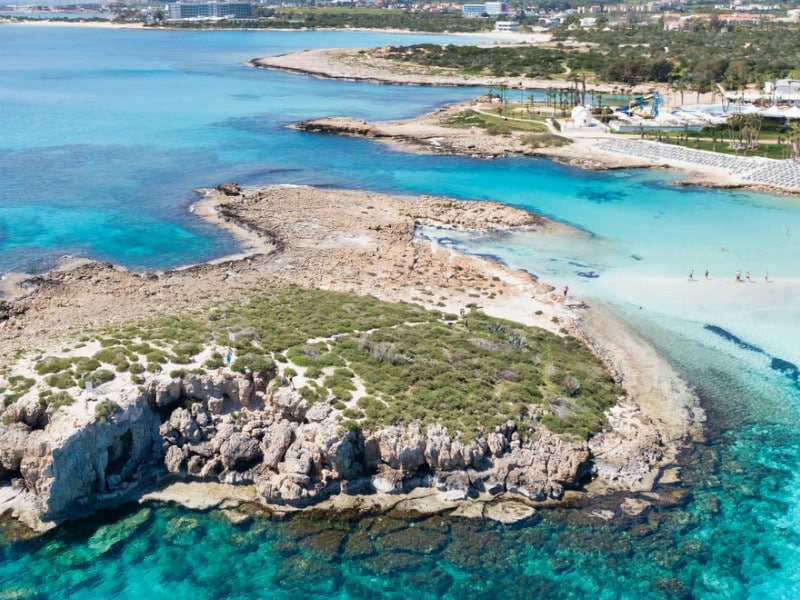
Attractive beaches surround Cyprus’ outer edges. The forty Blue Flag status coves are perfect for soaking up the sun and unwinding on the sands. Cyprus’ beaches are recognized as being among the cleanest in Europe by the European Environmental Agency and sparkling azure waters are promised wherever you go.
Take a shot at one of the activities on the long list of available watersports. With warm water temperatures well into October, Cyprus also has a longer diving season than most of its competitors nearby. The clarity of the sea, vital to good diving, is also world-class. Larnaca Harbour is home to The RS Zenobia, a 585-foot long cargo ship that sunk in 1980 and is a scuba diver’s dream, with well-preserved cargo which has earned it a reputation as one of the top wrecks in the world.
Aside from its beaches, Cyprus has rugged mountains and breathtaking countryside. Hike through Avakas Gorge, formed by a stream that has eroded the limestone over thousands of years leaving a two-kilometer corridor with walls that rise 30 meters on either side. This site has a wealth of native animals and plants, and it is a great place to spot the rare Centauria Akamandis, a plant that lives only in Avakas Gorge.
Petra tou Romiou, also known as Aphrodite’s Rock, is a fabulous formation of natural rock on the coast of Paphos and a major tourist hotspot. It’s believed that the rock was part of the shell that carried the Goddess of Love to the island of Cyprus. It’s a favored spot for newlyweds to visit, as it’s said to have links to beauty, luck, love, and fertility.
Something that may be just as magical as the legend of the Goddess of Love is the Millomeri Waterfalls. The fifteen-meter-high falls in central Cyprus is a sight to behold and the surrounding region, below Mount Olympos, provides great hiking trails.
And if you don’t want to feel like you’re in Europe at all, the Limassol Sand Dunes will transport you to the Middle Eastern, with Arabian-sque desert mounds that stretch the coast. Visit the dunes for an action-packed buggy adventure or alone at sunset to reflect and soak up the otherworldly views.
Lastly, The Cape Geco national park is brimming with trails through landscapes that will bless your eyes and blow your mind. Treks with panoramic sea views expose you to architecture like the whitewashed chapel of Agio Anargyroi, then the same paths take you over the Kamara tou Koraka natural bridge and back again to the coast to venture deep into Cyprus’ famous sea caves. Treks vary in length and difficulty, but there is something for any interested tourist, no matter the level of fitness or skill.
The Food
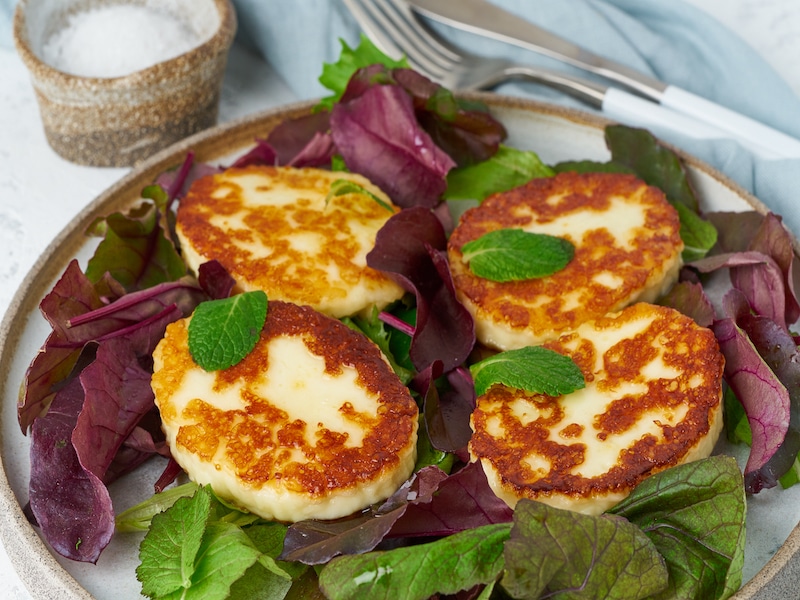
Cyprus sits at the crossroads of three continents. As a result, its cuisine comprises a mixture of Southern European, Middle Eastern, and Central Asian influences. Eating in Cyprus is no joke – you’ll rarely spot Cypriots gathered around a table without a couple of plates to snack on.
Locals love their vegetables, many of which are rife in the warm, Mediterranean climate. Whether fried, raw, served cold with yogurt, or dried before cooked, the choice is yours. For a truly local experience, try the much-loved Koupepia, one many will know as stuffed vine leaves.
This dish is common in Greece, Turkey, and the Middle East too with each region staking its claim over the original recipe. Locals will tell you it holds a place on every one of their grandmothers’ menus. Vegetable casing, known as gemista, is a Cypriot tradition beyond vine leaves. Other vegetables, including peppers, tomatoes, onions, and even courgettes’ flowers, can also be stuffed.
In Cyprus, you can also feast on mounds of Halloumi, arguably the island’s most famous product, with its popularity extending beyond Europe. Or indulge in Sheftalia, a spin-off from the famous Greek dish. The Cypriot-style souvlaki consists of small chunks of charcoal-grilled meat on a skewer and a large amount of fresh salad filling. It’s a very popular meal with locals and tourists.
Still, without traditional sweets from Cyprus, a holiday would not be complete. It is a Turkish, Cypriot, and Greek Cypriot tradition to dip walnuts or almonds into fruit juice with honey before drying in the sun. These and other simple syrupy sweets like the deep-fried donut holes sold in specialty bakeries around the country are often served with coffee or tea. You can find sweets in the markets, promenades, or cafes. Look out for them as syrup is a taste of Cyprus.
The History

Once you have eaten your fill, it’s time to discover the impressive history of the island. Cyprus is steeped in heritage, dating back to 1,100 BC. Wherever you go, you can be transported back in time by the ancient architecture, ruins, and tales that echo around the landscape.
Paphos is home to many remains of ancient tombs, fortresses, and palaces, and for this reason, the town is now a Unesco World Heritage site. As the legendary birthplace of the daughter of Zeus, Paphos became the center of Aphrodite’s following. People are known to have lived in Paphos since the end of the stone age, or the Neolithic period, worshipping the fertility goddess. The remains of the sprawling Temple of Aphrodite, built in the 12th century BC by the Mycenaeans, are still visible today.
Try taking a trip to Salamis, a city once home to conquering superpowers including Assyrians, Egyptians, Persians, and Romans. Or head to Soli, an ancient Cypriot city in new Lefke, linked to St Mark, the evangelist who was supposedly baptized there in 68 AD.
Though excavation is yet to be completed, many ancient churches, museums, and other monuments linked to the patron saint have been uncovered. Cyprus is so much more than its beach resorts and history buffs will never go a day bored.
The Size

With Cyrpus being an island with so much to see, being small is a benefit for visitors. It might be the third largest isle in the Med, but at less than 10,000 square kilometers it is 13 times smaller than New York state and as many as 26 times smaller than the United Kingdom. The whole country is closer in size to the Greek island of Crete and you can visit for just one week and still fit most of what Cyprus has to offer.
Enjoy waking up to a traditional Turkish-Cypriot breakfast in the North, tour the national parks before having lunch at a border town then visiting the Walls of Nicosia in the capital. Later, enjoy the evening sea-breeze from your beach hammock overlooking the Mediterranean Sea in Paphos, and that’s all in one day.
Most distances from each city to another can be covered by car, so we recommend renting a vehicle to explore freely. Or support the locals by hiring a taxi driver who will naturally become your tour guide for the day, as they proudly show you around their country.
The Parties

A hotspot for wild holidays, Cypriots know how to throw a good party. Get dressed up and hit the strip because the party shores of Cyprus are calling.
The village of Ayia Napa doesn’t need much introduction when it comes to nightlife. It gives Ibiza a run for its money and has been an international party hotspot for decades. With over eighty bars and twelve nightclubs, there is enough going on to have a different experience every night of the week.
Some of Europe’s best clubs are located in Ayia Napa, such as Castle club, which is not only the biggest in Cyprus but among the largest in Europe and one of DJ Mags Top 100 Night Clubs in the world for six years running. It’s built inside what looks like an old castle and hosts five arenas under one roof.
Before Ayia Napa monopolized the trophy as the party capital, there was also Limassol. The second-largest city in Cyprus was once the place to be. It might be more low-key than Ayia Napa nowadays, but it is still home to a wide selection of bars, clubs, and cafes to keep loyal party animals visiting.
With a whole street dedicated to buzzing venues, named ‘Bar Street,’ Paphos doesn’t fall miles behind either. From karaoke haunts to beach hangouts, live music spots, and classy loungers, it might be more chilled, but it still guarantees a good time.
Turkish Cypriots are also known for their love of good nightlife. Spend a week in North Cyprus, and the whole region is a vibrant celebration year-round. From the walnut festival to the Memetçik grape celebration, olive fêtes, and Agri Cyprus fiar, tourists are promised a venture through the culture wherever you go.
The Variety

For such a little island, there is something for everyone in Cyprus. Whether you’re a history aficionado, a real foodie, celebrating a stag or hen do, or just wanting some quality time with the family, Cyprus can accommodate. It may be small in size, but it’s mighty in possibilities.
If you care about Mother Nature, you can enjoy agro-tourism holidays in the heart of Cyprus. Engage in Cypriot culture and rural life like a real local. Try out tasks like olive picking, bread making, or even milking the sheep, among other activities. Still, Cyprus also has many options for visitors looking to live the high life, from family-run luxury hotels to five-star resorts, guaranteeing the allure of traditional Cypriot hospitality combined with modern sophistication.
The island also boasts several casinos and world-class sports and spa facilities for your enjoyment, particularly at the Famagusta beaches and Karpas.
City breaks, beach getaways, raging nightlife, unique culture – whatever your reason for a vacation, it’s important to take a moment to relax and enjoy life in an increasingly impatient, stressed, and anxious world. The island of Cyprus offers carefree and slow-paced days to walk by the sea, ride through the mountains, or hike through the forests surrounded by nature.
How many days do you need in Cyprus?
There are so many things to do in Cyprus and one city could take up your entire vacation time. However, you can get a lot done in a week and even base yourself between two sides of the island in order to fit in some of the historical attractions, impressive scenery, and some all-important beach relaxation. Yet, if you have less than seven days, you might want to base yourself in one city like Paphos or Limassol and explore from there.
Is Cyprus safe?
Cyprus is an extremely safe travel destination, for the most part. Violent crime and terrorism risks are low, while petty crime does occur but mainly in touristy areas during the holidays. Cyprus might be geographically close to some wartorn regions too, but the island location protects Cyprus from cross-border conflict. However, Cyprus does sit within a zone of heightened seismic activity and earthquakes are common. Most are only minor tremors and the country is well prepared for big quakes, but it’s best to familiarize yourself with emergency procedures before you visit.
When is the best time to visit Cyprus?
The warm, Mediterranean climate of Cyprus makes it a year-round destination, but the island is most popular from July to August when average highs hover above 80 degrees Fahrenheit and there is very little rain. Still, hoards of tourists send prices soaring and crowds of people make the cities less pleasant to navigate. Think about visiting between May and June for some of the driest weather, pleasant highs in the late 70s, but fewer crowds and out-of-season discounts.
